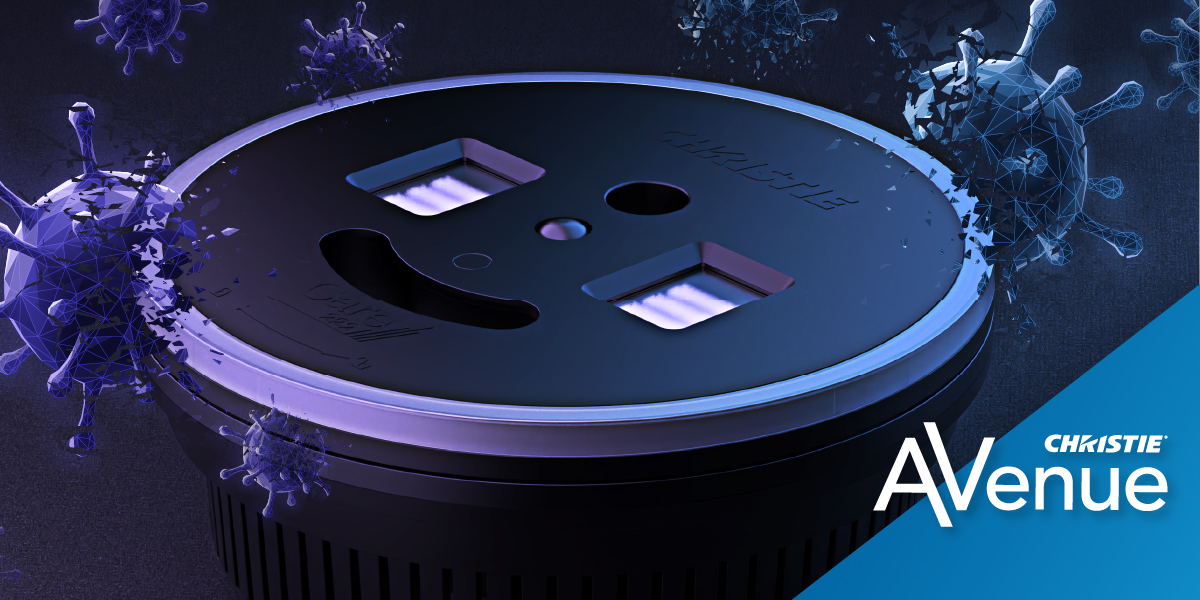CounterAct. A light at the end of the COVID tunnel?

Persistent, dangerous, and deadly, but remarkably fragile outside a host – we’ve all learned a lot about viral infection over the past few months. And washed our hands and worn our masks and kept our distance as a result. There’s also a renewed sense of optimism now that welcome news is emerging about vaccines – it’s not that we’re in the clear – but we could be.
But if a novel virus-like COVID-19 can appear once – so can another just as deadly. And COVID itself mutates, and this may yet restart the race for a vaccine. And there are still plenty of other harmful pathogens to be concerned about. Life, and our relationship with our pathogens, isn’t going to be post-pandemic any time soon.
UVC light kills viruses
And what relevance has this to a company embedded in the Pro-AV and entertainment industries – manipulators of light better known as a provider of shared entertainment experiences than pathogen-reduction?
A great deal. Because if there is one thing viruses and bacteria find deadly, it is UVC light – because it messes with their RNA (DNA, in bacteria’s case). And light is something Christie knows well. For example, there’s a narrow band of UVC light – 222 nanometers – that’s perfect. It inactivates pathogens, disinfects surfaces, and is safe when people are present. Provided it’s used correctly.
But producing that light – and none of the harmful wavelengths on either side – is tricky. Unless you’re a lamp manufacturer like Christie’s parent company Ushio. Working with a team at Columbia University in New York, led by Dr. David J. Brenner, Ph.D., D.Sc. they’ve developed their Care222 lamp. A proprietary technology that produces far-UVC light with a narrowband filter that constricts the >230nm light that can damage eyes and skin.
A system and a solution
Predictably though, things are not as simple as screwing a lamp into every spare socket and declaring an area virus-free. Outside of strictly controlled clinical spaces they must be used as a system – and that’s where Christie’s expertise comes in. CounterAct™ is a system: one designed to work safely and effectively in the shared interior spaces where many of our partners operate, and where Covid restrictions have hit hard. That’s cinemas, offices, Houses of Worship, theme parks, cruise ships, and their lobbies and restrooms.
Most importantly, CounterAct is not pathogen-specific. If new viruses emerge, they will still have no defense – and the same goes for antibiotic-resistant superbugs like MRSA.
Even after an effective vaccine is widely distributed and the pandemic is under control, the world will still be full of other pathogens, perhaps not as newsworthy, but equally as lethal. The World Health Organization estimates flu kills hundreds of thousands annually, and medicine is in a constant battle with infection. Given this, any reasonable technological steps that can be taken to effectively reduce pathogens in indoor spaces are surely worth considering.
An added layer of defense
Is this a magic bullet? Of course not. Although far-UVC 222nm light has been shown to significantly reduce pathogens like the SARS-CoV-2 coronavirus that causes COVID-19, CounterAct works in tandem with other preventative measures like regular surface cleaning and hand washing. We shouldn’t underestimate its impact on the re-opening process though, for that depends as much on social confidence as on regulations lifting. Spaces may open once again; but visitors won’t return in numbers until they feel safe and, just as critically, feel normal. Unobtrusive, invisible, non-invasive CounterAct is about as reassuring as it gets.
We never imagined
Did Christie think it would be in the viral suppression business? No, but then we didn’t expect to be in the middle of a pandemic either. Just grateful that our core skills of light manipulation and system building can be of such value – to our customers, our own industries, and the world beyond.






